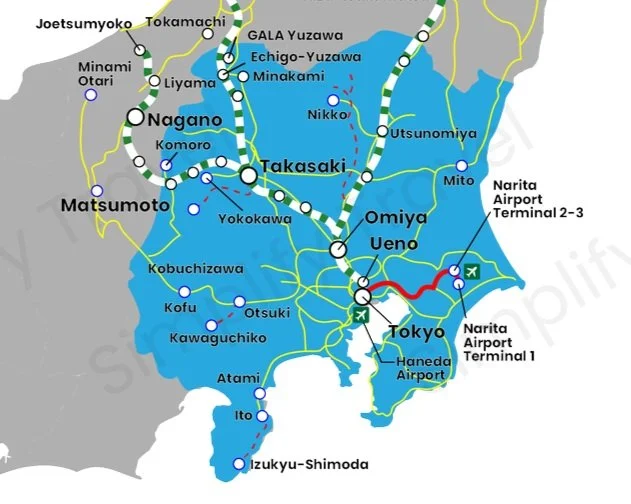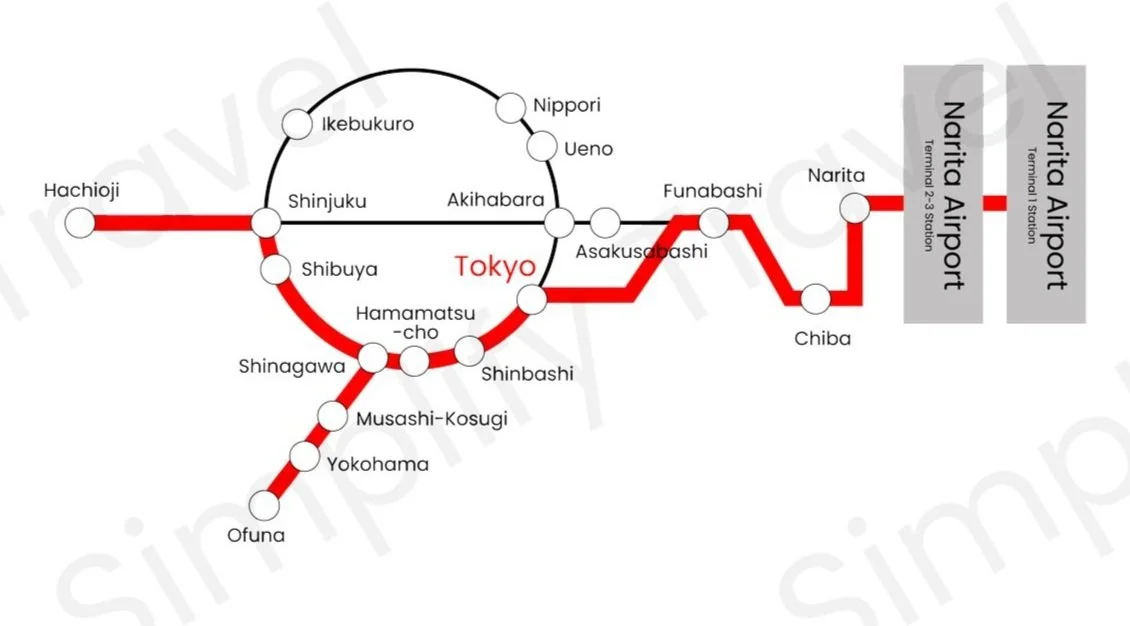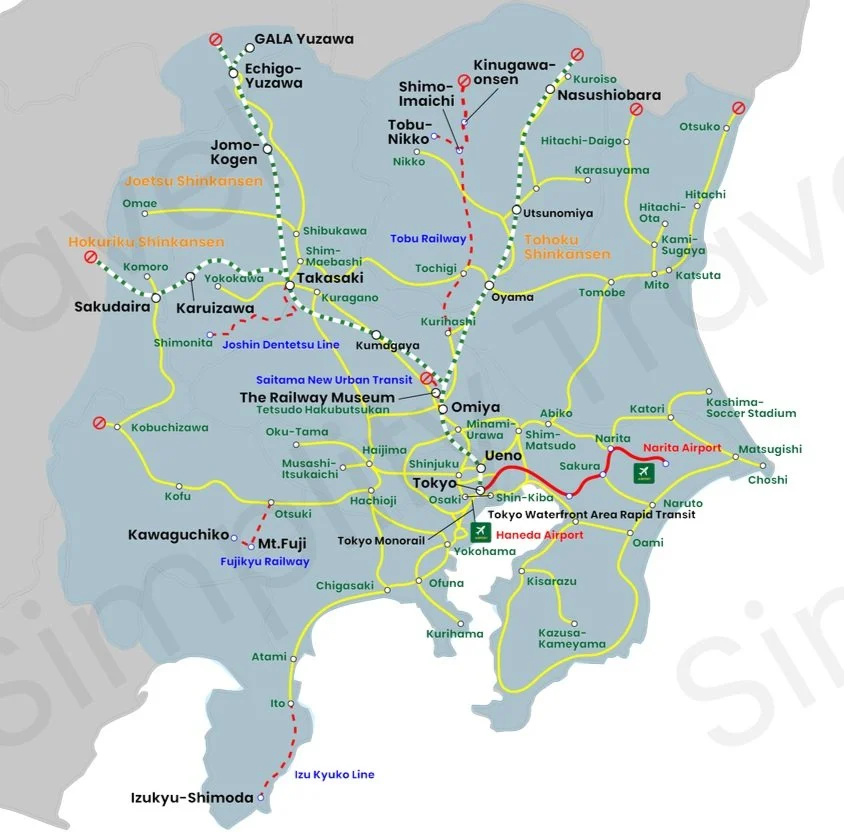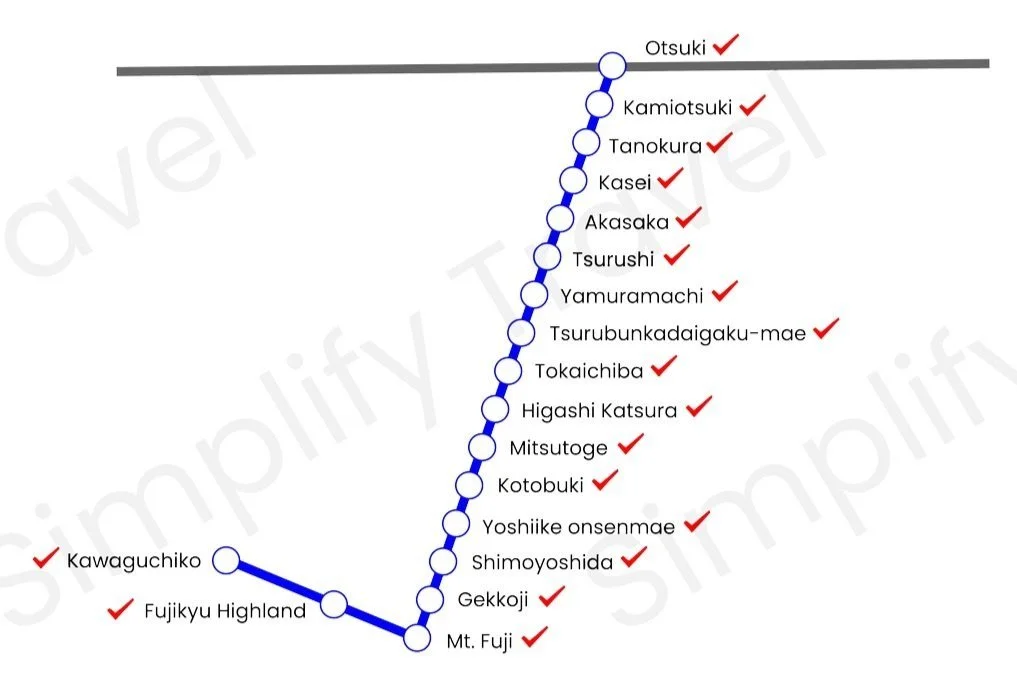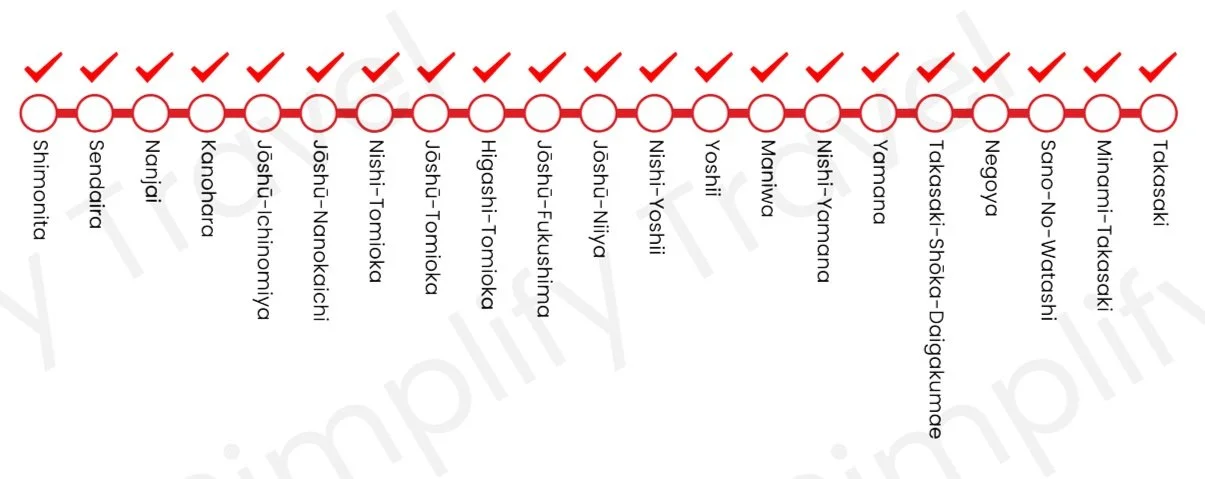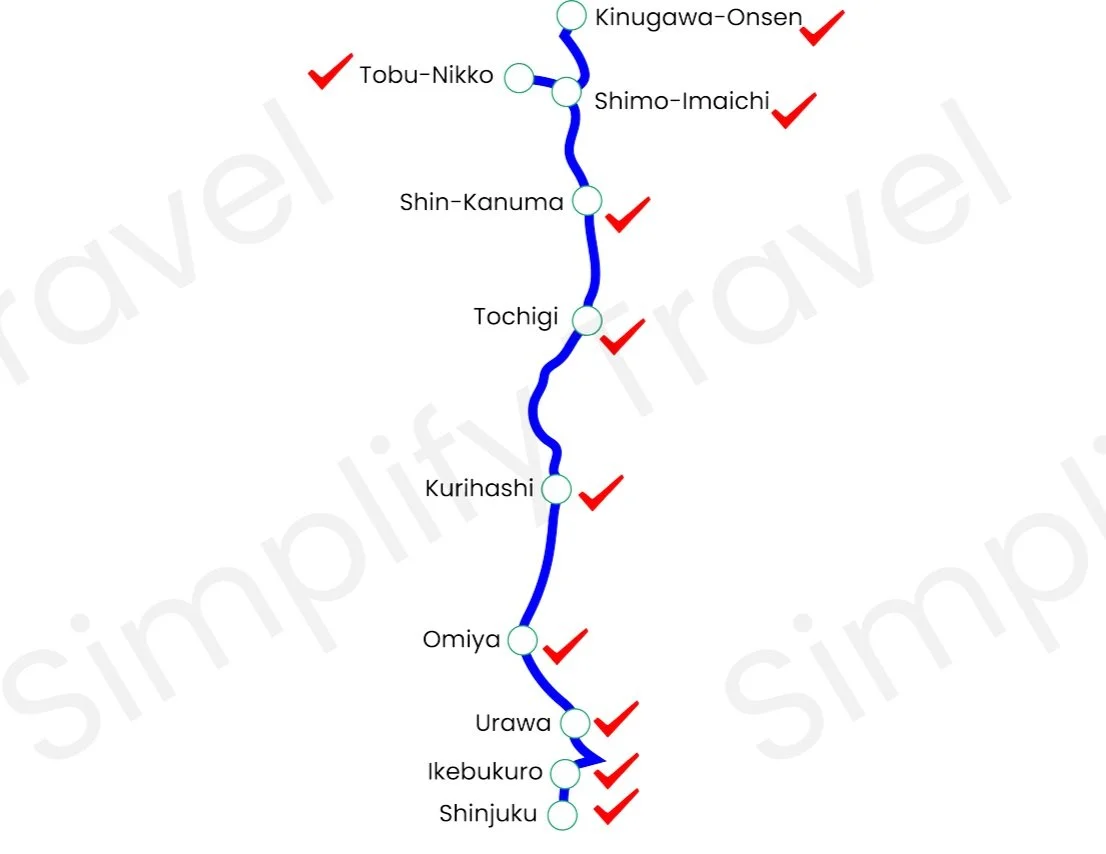JR TOKYO Wide Pass - What it actually cover?
Today, let’s find out a few unclear informations about JR Tokyo Wide Pass.
Which is the last station that the pass covered, before I need to pay?
Do you know, not all Shinkansen lines and stations, are covered!
Which are the non-JR lines that I can take, that will take us to those famous attractions!
And let’s find out whether the pass is worth it, with 3 famous attractions that the pass covered!
Let’s start with the Map!
Here on this map, within the “blue” land mass, it cover a portion of the JR East lines, the Narita line, part of the Shinkansen lines and some of the non-JR lines too.
Who is this pass for?
For travellers who want to base themselves in Tokyo, and take day trips to Lake Kawaguchiko and Nikko.
Hot spring lovers, who want to stay at popular hot springs and resorts, such as Karuizawa, Kusatsu or Izu.
Urban explorers, who want to enjoy travelling to places, in and around Tokyo, such as Shinjuku, Akihabara and Kamakura.
If you are the above mentioned travellers or interested to learn more, lets dive in on the details.
But! Which is the last station that the Pass covered, Before i need to pay?
Not all JR East lines and stations are covered by the pass!
From the below map, you need to take note of those stations with the “stop” signs, because these are the last stations that the pass covered for the JR East Lines. Beyond those stations, you need to pay the additional fares.
Narita Line.
For travellers who base themselves in or near Tokyo areas, this is the line they will most likely take.
And the pass covered you, to and from Narita Airport within the 3 days period.
The stations along the “red” Narita Line are covered by the pass.
Not all Shinkansen lines and stations, are covered!
In this map, the Tōhoku Shinkansen trains, traveling to Nasushiobara stations, will be the last station the pass will covered.
Jōetsu Shinkansen trains, traveling to Echigo Yuzawa and Gala Yuzawa stations, will be the last stations that you can used with the pass.
Hokuriku Shinkansen trains, traveling to Sakudaira station, the Sakudaira stations will be your last stations that the Tokyo Wide pass covered, beyond that you need to pay the fares.
Which are the non-JR lines that the pass covered!
The non-JR lines are, the Tokyo Monorail, Izu Kyuko Line, Fujikyu Railway Lines, Joshin Dentetsu Line, Saitama New Urban Transit, the Tokyo Waterfront Area Rapid Transit Line and Tobu Railway lines. But for some lines, not all the stations are covered!
Tokyo Monorail.
It cover the route where most traveler will use, from Haneda Airport to the Yamanotae line, which will bring you to Tokyo station.
Do note that, there are 3 type of trains, the Haneda Express, the Rapid train and the Local train! Each individual train stopped at various train stations. The fastest and less stops, is the Haneda Express train.
Izu Kyuko Line.
The Izu Kyuko line, bring you to popular hot spring and resort, along Izu line.
From Atami, to Shimoda, each has their own unique identity and onsen, that you can experience during your stay.
Some of the most famous onsen in Izu are, Atami Onsen, Ito Onsen, Inatori Onsen – Higashi Izu, Kawazu Onsen, Shimoda, Dogashima Onsen – Nishi izu, Shuzenji Onsen – Izu city, and Izu Nagaoka Onsen – Izunokuni.
Fujikyu Railway Lines.
The Fujikyu Railway Lines, is the line that you take for a day trips to Lake Kawaguchiko.
It cover the above stations!
Regarding the ticket, it varies depending on the type of train. The JR Tokyo Wide Pass, typically cover the basic fare ticket and the express ticket.
Here’s a table for your easy reference.
A local train need a basic fare ticket only. A Rapid train also need a basic fare ticket. For Limited express train, it require a basic fare ticket, a express ticket and a reserved seat ticket, for Car No.1 which require additional fare. And for the Fuji Tozan Densha train, it require the basic fare ticket and the seating ticket, which also require additional fare.
Joshin Dentetsu Line.
The Joshin Dentetsu Line, take you from Takasaki Station to Shimonita Station, covering the above 20 stations.
There are many Hachiman shrines in Japan, and the one in Yamana was constructed about 850 years ago. The deity there, is believed to bring luck in childbirth and raising children. The shrine was renovated few years ago and now even has a cafe and bakery.
Saitama New Urban Transit.
Saitama is the prefecture just north of Tokyo, and the Saitama New Urban Transit line has 13 stations. But the Tokyo Wide Pass only allow you to take from Omiya station to Tetsudō Hakubutsukan Station, where the Railway Museum is just beside the station.
Tokyo Waterfront Area Rapid Transit Line or the Rinkai Line.
Opened in 1996, a single line with 8 stations and it connects central Tokyo to the artificial islands of Aomi and Odaiba.
The pass cover the above stations!
You can access to Odaiba, where it is a popular shopping and entertainment district on a man-made island in Tokyo Bay.
Tobu Railway Line.
The Tobu Railway lines, will bring you to Nikko where the famous Nikko Toshogu shrine is located.
It cover the above stations!
Do note that, it cover from Shinjuku to Tobu Nikko Station, and not from, Asakusa station to Tobu Nikko Station.
For JR TOKYO Wide Pass holders, you can ride Trains on the Tobu Railway tracks that operate from Kurihashi to Tobu nikko and Kinugawa onsen, during this specific interval.
Is it worth it?
This is a 3 consecutive days pass, and the cost for Adults is 10,180 yen, about USD$74 and Children is 5090 yen, about USD$37. And it is only available for purchase by holders of a non-Japanese passport, and foreigners living in Japan can also purchase this pass!
Let’s pick 3 famous attractions from this pass, the Lake Kawaguchiko, Kusatsu onsen and the Nikko Toshugo shrine.
The return trips for these 3 attractions, will cost you about USD$54, USD$78 and about USD$56 respectively. Total cost will be around USD$188.
Not including the cost within the Tokyo areas or even the Narita Line, that you would most probably take.
It is a great buy, if you intend to visit the 3 attractions in your Tokyo stay, within the 3 days period, or even just 2 attractions for your stay in Tokyo.
Remember, the JR Tokyo Wide Pass is valid for three consecutive days, so plan your itinerary wisely to make the most of your pass. Whether you want to visit the iconic landmarks of Tokyo, explore the natural wonders of Nikko, or bask in the beauty of Mount Fuji, this pass gives you the freedom to travel at your own pace.
Where to buy the Tokyo Wide Pass?
The easiest way to get a JR Tokyo Wide Pass is by ordering it online.
Or purchase directly from a JR East ticket machine that has the passport reader.
Or from the staff at the ticket counter, and make sure to take your passport with you, as the sales staff will want to see it before handing over the rail pass.
Important notes!
These are a few Travel Terms and Conditions, for the JR Tokyo Wide Pass. If you want to find out more information, please refer to the links in the below +Source icon.
You cannot use the JR TOKYO Wide Pass to travel on the Tokaido Shinkansen. (This is because the Tokaido Shinkansen is operated by a different company)
An additional regular ticket fee is required when taking a train through areas not covered by the pass.
Not valid for Hayabusa, Komachi, or GranClass seats. An additional fee is required if you wish to use these trains or the GranClass carriage.
On Fujikyu Railway, you must take a numbered ticket when you board the observation car of the Fujisan Express, and a seating ticket when you board the Fuji Tozan Densha. (Separate fare applies.)
An additional fee is required if you wish to use Car No. 1 on the Fujisan Express, Fujisan View Express, or the Fuji Tozan Densha on the Fujikyuko Line.
The pass is only valid if the starting or ending station is on a JR Line when using an express train with through service on Tobu Railway lines.
Gala Yuzawa Station only operates during the winter and spring.
Affiliate Disclosure:
The links for JR TOKYO Wide Pass may result in a small affiliate commission if you decide to purchase the recommended product at no additional cost to you.
-
Official Japan Rail Pass Website - https://japanrailpass.net/en/
JR TOKYO Wide Pass - https://www.jreast.co.jp/multi/en/pass/tokyowidepass.html
Narita Line - https://www.narita-airport.jp/en/access/city_access
Tokyo Monorail - https://www.tokyo-monorail.co.jp/english/guidance/index.html
Izu Kyuko Line - https://www.izukyu.co.jp.e.qj.hp.transer.com/train/route.php
Fujikyu Railway Lines - https://e.fujikyu-railway.jp/
Joshin Dentetsu Line - https://www.joshin-dentetsu.co.jp/railway
Saitama New Urban Transit - https://www.new-shuttle.jp/station/
Tokyo Waterfront Area Rapid Transit Line - https://www.twr.co.jp/en/tabid/237/Default.aspx
Tobu Railway Line - https://www.tobu.co.jp/en/express_info/timetable.html
Luggage Size Limit - https://japanrailpass.net/pdf/oversized_baggage_EN_230317.pdf
Klook JR TOKYO Wide Pass - https://klook.tp.st/A2skJ5KA
Agent JR Pass - https://click.jrpass.com/SH8T
Agent Regional Pass - https://click.jrpass.com/SH8U
